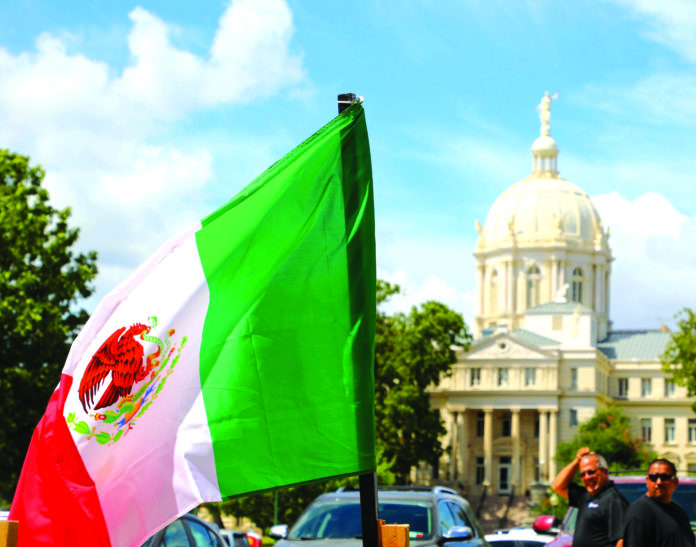
By Carson Lewis | Page One Editor
Editor’s Note: An earlier copy of this article misnamed event organizer Louis Garcia as Louis Fagardo.
Hispanic Heritage Month kicked off this weekend in Waco with a parade commemorating Mexican Independence Day. The month celebrating Hispanic culture will continue until Oct. 15.
The parade celebrated the Hispanic community and commemorated Mexican Independence Day, proceeding down Austin Avenue from Ninth Street to Third Street Sunday. The event, hosted by the Waco Hispanic Museum, featured different Waco organizations important to Waco’s Hispanic community.
Mexican Independence Day, officially Sept. 16, commemorates when Miguel Hidalgo y Costilla, a Catholic priest, announced a call to revolution against the Spanish by taking up a banner of the Virgin of Guadalupe, an image of the Virgin Mary as she appeared to a native Mexican believer.
The parade celebrating this day brought a variety of people from the local community.
Robert Valdez was among those who watched the parade. He was born in Waco and said that he came out to see the event after hearing about it from a local article, and that he wanted to support the Waco Hispanic community.
“[The Hispanic community in Waco] is a large community . . . I’m proud of my descendants. Being an American of Mexican descent, I don’t want to leave that behind, just as other ethnicities would want to maintain their own identities. Even though I’m proud to be an American, I want to maintain that aspect of Hispanic culture,” Valdez said.
Louis Garcia, organizer of the event, said that the event was a success.
“I thought it was time for us to get back together . . . it was our first year having a parade. It turned out really good,” Garcia said. “We had a lot more folks than expected.”
Garcia said that in Waco’s past, the Hispanic community was divided between Tejanos, or Hispanic people who claim descendants from the Spanish settlers of Texas, and Chicanos, those who claim indigenous heritage. He said they experienced a separation.
“We went through a time where we didn’t know who we were,” Garcia said.
He said that Tejanos were discouraged from speaking Spanish, even in their homes, for fear that their children wouldn’t be able to experience success in America speaking Spanish, but that Chicanos held on to the traditions of their ancestors.
In addition to in-group divisions, Garcia said that the community also experienced division through the Urban Renewal project of the 1950s and 1960s. The program bought land from residents in areas that the project wanted to develop and built new infrastructure. This progress, however, came at the cost of the Hispanic community.
“All along the Brazos, from Cameron Park to Interstate 35 and past into Baylor, along the river, were old houses,” Garcia said. “That’s what Urban Renewal came in and cleaned out . . . they disrupted the inhabitants of that part of town. . People got lost and went elsewhere.”
To learn more about future events hosted by Waco Hispanic Museum, visit the organization’s Facebook page.





